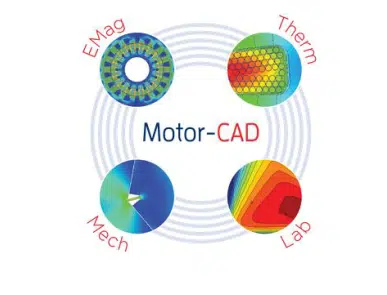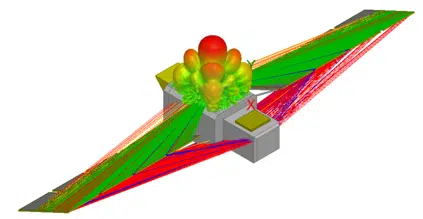Webinar Description | Distortion Prediction in Additive Manufacturing
Ansys Additive Print simulates the laser powder bed fusion process (additive manufacturing).
Process-induced distortions are among the quantities that the software can evaluate.
This webinar will present how this tool was used to predict the distortion in an AlSi10Mg end-use part. The numerical results are also be experimentally validated.

Effective Distortion Prediction in Additive Manufactured Components | Employing Model Transfer Simulations Among Material Structures
The fundamental problem of distortion in laser-based additive manufacturing (LBAM) compromises the geometric integrity of objects produced through additive manufacturing and generally shows a complex dependence on the underlying material.
The issue in LBAM is learning a distortion model for a new material system given past trials since the changes in properties between various materials preclude the immediate application of a distortion model learnt for one material to another. Finite element analysis or several tests in an empirical research are commonly used in current approaches for examining the distortion of various material systems.
Reducing Materials Costs through Physics-based AM Simulations
These techniques can be expensive in terms of computation, time, or resources, though they do not learn from prior tests. To take use of prior experiments on previously investigated material systems for more effective distortion modeling of new systems, we provide a Bayesian model transfer methodology that is both physics-based and data-driven.
By defining the differences between two materials as a hidden variable, this method, which is based on the statistical effect equivalence framework, transfers distortion models across different materials. Our approach lessens the amount of testing and work required to specify distortion models for novel material systems.
In a recent case study involving the transfer of distortion models from Ti-6Al-5V disks to 320L stainless steel disks, showcased in our on-demand webinar, we confirm our methodology.
Reducing Materials Costs through Physics-based AM Simulations
These techniques can be expensive in terms of computation, time, or resources, though they do not learn from prior tests. To take use of prior experiments on previously investigated material systems for more effective distortion modeling of new systems, we provide a Bayesian model transfer methodology that is both physics-based and data-driven.
By defining the differences between two materials as a hidden variable, this method, which is based on the statistical effect equivalence framework, transfers distortion models across different materials. Our approach lessens the amount of testing and work required to specify distortion models for novel material systems.
In a recent case study involving the transfer of distortion models from Ti-6Al-5V disks to 320L stainless steel disks, showcased in our on-demand webinar, we confirm our methodology. In addition, this case study is the first instance of model transfer between material systems and illustrates the ability of the Bayesian model transfer methodology to address the issue of comprehensive distortion modeling across varying material systems in LBAM.
How to Share Process-Related Information across Unique Material Systems in Laser-based Additive Manufacturing (LBAM)
The goal of this webinar is to provide a model transfer framework for sharing process-related information across several material systems in laser-based additive manufacturing that is both physics-based and data-driven (LBAM).
With less testing, our methodology offers a novel way to construct process-property models for important process outcome variables of material systems in LBAM. It is crucial to provide statistical models for significant outcome variables since it might be challenging to choose the best process inputs due to variations in material qualities (such as melting point, strength, and thermal conductivity).
Our methodology can fill the gap for the efficient establishment of input–outcome relationships in new material systems by leveraging data and other information (e.g., prior information and other sources of information besides observed data) from similar experiments involving different materials that were previously studied and modeled. This is expected to significantly reduce the time and effort needed for material certification and product development.
Identifying AM Inputs to Optimize Operational Outcomes
Statistical models offer a method for choosing the best process inputs with fewer experiments. Currently, a practitioner would need to conduct a significant number of trial-and-error experimental studies separately for each material; in order to obtain their corresponding process-property models in order to predict the outcomes of parts manufactured using new materials in LBAM and identify the inputs that can optimize the outcome.
By using data and other information (such as prior information and other sources of information besides observed data) from similar experiments involving different materials that have previously been studied and modeled, our methodology can fill the gap for the effective establishment of input-outcome relationships in new material systems.
Current approaches to Model and Predict Distortion
The distortion of a part made using LBAM is used as the primary outcome variable in this webinar and the materials that go with it. The geometric discrepancy between the manufactured part and the original part design in the z direction is known as distortion.
It is reviewed how finite element analysis (FEA) and/or empirical research are generally used to model and predict distortion for new material systems.
These methods can give users of LBAM practical insights into the behaviors of materials, but they frequently demand several trials to produce definitive results on various material systems, which adds significantly to the time and effort required by users of LBAM. The time and effort required for material certification and product development should be greatly reduced as a result.
Carrying out Comprehensive Empirical Investigations for each Material and Industrial System
Due to the high costs of materials and machine operation, it is not practical to conduct extensive empirical investigations for each material and manufacturing system. Three main steps make up our suggested methodology for transferring models between various material systems.
The initial stage is to define a “baseline” result model that takes into account the correlations between actual input process factors and the output for a certain selection of material.
In order to estimate and model the total equivalent amount (TEA) of the lurking variables and properties associated with the new material in terms of the observed inputs, the established baseline model for the first type of material is used in conjunction with data on a small sample of parts manufactured using the new material.

Carrying out Comprehensive Empirical Investigations for each Material and Industrial System
Due to the high costs of materials and machine operation, it is not practical to conduct extensive empirical investigations for each material and manufacturing system. Three main steps make up our suggested methodology for transferring models between various material systems.
The initial stage is to define a “baseline” result model that takes into account the correlations between actual input process factors and the output for a certain selection of material.
In order to estimate and model the total equivalent amount (TEA) of the lurking variables and properties associated with the new material in terms of the observed inputs, the established baseline model for the first type of material is used in conjunction with data on a small sample of parts manufactured using the new material.
The statistical effect equivalence framework served as the first formalization of the TEA notion. The TEA that is detailed in our methodology can directly integrate prospective property differences that are known a priori to be crucial to prediction, in contrast to that model transfer scheme.
Furthermore, by treating them as a hidden variable, the TEA can implicitly account for the numerous complex and changeable material features.
TEA Modeling and Distortion Prediction
The TEA model is then added to the baseline model in the third stage to establish a model for the new material and transfer a distortion model from one material to another while taking hidden factors into account. Check out the latest Ansys AM Software OR register for our webinar right away to learn more about our computational approach for Efficient Distortion Prediction.





